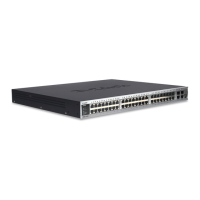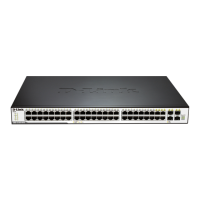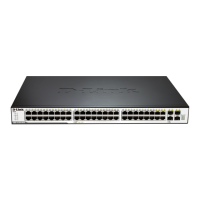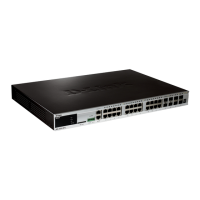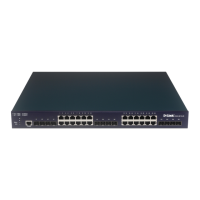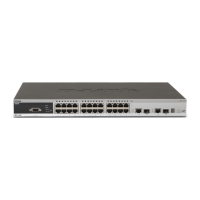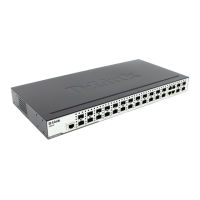when the power budget is running out. When the system attempts to supply power to a new
port, if the power budget is insufficient to do this, the PoE controller will initiate a port
disconnection procedure to prevent overloading the power supply. The controller uses one of
the following two ways to perform the disconnection procedure.
deny_next_port - First in first service, the new port will not be powered up. If the power
consumption exceeds the power budget, the port beginning with the maximum number will
be denied regardless of its priority. If the disconnect method is set to deny the next port,
the power provision will not utilize the system’s maximum power. There is a 19W safety
margin. That is, when the system has only 19W remaining, this power cannot be utilized.
deny_low_priority_port - If there are ports that supplied power, that have a priority lower
than the new port, the port with the lowest priority will be disconnected. This process will
stop until enough power is released for the new port. Note that if the disconnect method is
set to deny low priority port, then the power provision can utilize the system’s maximum
enable - Specifies that the legacy PDs detection status will be enabled.
disable - Specifies that the legacy PDs detection status will be disabled and can’t detect the
Restrictions
Only Administrator, Operator and Power-User level users can issue this command.
Example
To configure the PoE system-wise setting:
81-3 show poe ports
Description
This command is used to display the settings and actual values of the PoE port.
Note: This command is only available to Switches in the DGS-3620 Series that support Power
over Ethernet.
Format
show poe ports {<portlist>}
Parameters
